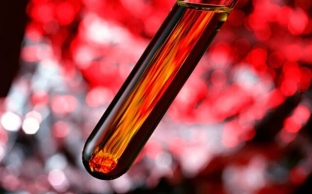Over the past few years, PRP-therapy (administration of autoplasma enriched with platelets to a patient) has become an effective rejuvenation technology regularly used by cosmetologists. Until recently, cellular technologies in aesthetic medicine seemed something exotic, but today they are becoming more common, they are being combined even with other procedures – for example, with chemical peels or contouring, and also used after plastic surgery for the speedy restoration of tissues. Why cellular technologies are becoming more and more popular among cosmetologists, read on estet-portal.com.
What possibilities of cellular technologies make them popular
Interest in cellular technologies that can be applied in aesthetic medicine arose when a population of stem cells was found in the dermal papilla of the human hair follicle, which was involved in the restoration of the skin after its damage. These cells were capable of differentiation in much the same way as the mesenchymal cells of the bone marrow, but they were much easier to obtain. In addition to hair follicles, stem cells have been found in the dermal blood vessel endothelium, terminal bulb, and other areas.
About 20 years ago, scientists discovered that when the skin is damaged, fibroblast-like cells rush to this place, which are multipotent and able to differentiate into mesenchymal cells. They replenish the population of dermal fibroblasts, populate the intercellular matrix and actively regenerate the skin.
The ability of dermal fibroblasts to divide is very high and persists throughout a person's life. One such cell is capable of producing more than 3 million procollagen macromolecules per day.
The functions of dermal fibroblasts are very diverse, so the methods of stimulating them to proliferative and synthetic activity are of great importance.
- They support the constancy of the dermal extracellular matrix and its renewal.
- They produce growth factors and normalize the physiological state of the epidermis.
- They produce collagen, glycosaminoglycans and other dermal proteins.
- They contribute to the formation of new blood vessels and their stabilization.
- They regulate the differentiation of the renewed epidermis.
- They are involved in the formation of the basement membrane and the framework of the dermis.
Modern cellular technologies, namely – intradermal injection of blood plasma enriched with platelets, today allow you to influence all of these processes. These cells initiate an enhanced immune response of the body when growth factors, cytokines, neutrophils, monocytes begin to actively restore the skin and stimulate dermal fibroblasts to intensive division.
In enriched plasma, the platelet concentration is five times higher than normal. Higher concentrations are not needed, since a further increase in the number of platelets in plasma does not lead to an increase in regenerative processes.

In which cases cell technologies show the best results
The popularity of PRP therapy has also been facilitated by the recent emergence of very convenient medical disposable kits with all the materials in order to obtain whole blood, prepare and inject platelet-rich plasma. Current indications for PRP therapy are:
- Some skin diseases where immune inflammation has become the leading pathogenic factor – acne, rosacea, impetigo, folliculitis;
- photo- and chronoaging;
- skin rehabilitation after chemical peels, laser treatments;
- moderate gravitational ptosis;
- decrease in skin turgor, its dryness, flabbiness, wrinkling.
Cell technologies make it possible to produce new fibroblasts and activate existing ones, stimulate angiogenesis, prevent cell apoptosis, which ultimately makes the skin more elastic, smooth, and has a significant anti-aging effect.







Add a comment